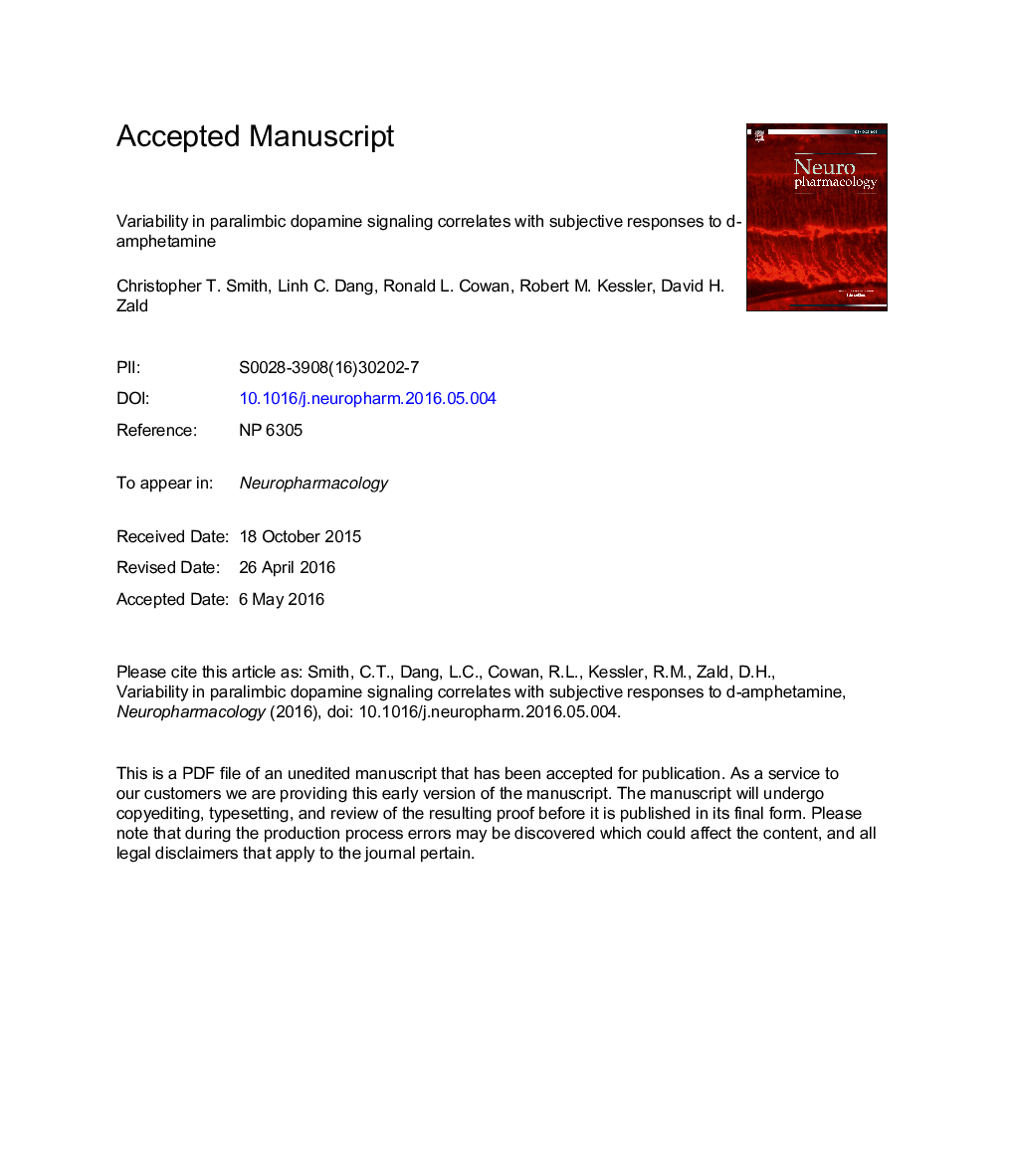| Article ID | Journal | Published Year | Pages | File Type |
|---|---|---|---|---|
| 5813515 | Neuropharmacology | 2016 | 29 Pages |
Abstract
Subjective responses to psychostimulants vary, the basis of which is poorly understood, especially in relation to possible cortical contributions. Here, we tested for relationships between participants' positive subjective responses to oral d-amphetamine (dAMPH) versus placebo and variability in striatal and extrastriatal dopamine (DA) receptor availability and release, measured via positron emission tomography (PET) with the radiotracer 18F-fallypride. Analyses focused on 35 healthy adult participants showing positive subjective effects to dAMPH measured via the Drug Effects Questionnaire (DEQ) Feel, Like, High, and Want More subscales (Responders), and were repeated after inclusion of 11 subjects who lacked subjective responses. Associations between peak DEQ subscale ratings and both baseline 18F-fallypride binding potential (BPnd; an index of D2/D3 receptor availability) and the percentage change in BPnd post dAMPH (%ÎBPnd; a measure of DA release) were assessed. Baseline BPnd in ventromedial prefrontal cortex (vmPFC) predicted the peak level of High reported following dAMPH. Furthermore, %ÎBPnd in vmPFC positively correlated with DEQ Want More ratings. DEQ Want More was also positively correlated with %ÎBPnd in right ventral striatum and left insula. This work indicates that characteristics of DA functioning in vmPFC, a cortical area implicated in subjective valuation, are associated with both subjective high and incentive (wanting) responses. The observation that insula %ÎBPnd was associated with drug wanting converges with evidence suggesting its role in drug craving. These findings highlight the importance of variability in DA signaling in specific paralimbic cortical regions in dAMPH's subjective response, which may confer risk for abusing psychostimulants.
Related Topics
Life Sciences
Neuroscience
Behavioral Neuroscience
Authors
Christopher T. Smith, Linh C. Dang, Ronald L. Cowan, Robert M. Kessler, David H. Zald,
